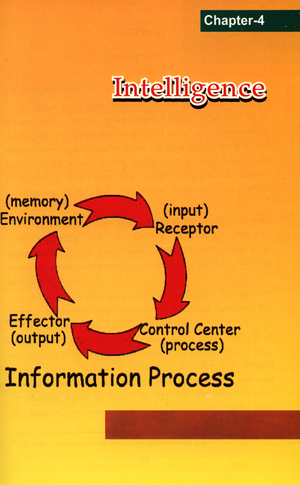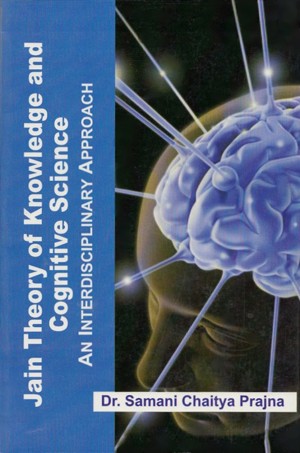
4.0 Introduction
What is so significant about the human brains that makes some people more capable than others? People value their power of thinking. Most of us are interested in why some people seem to drive a highly tuned Rolls Royce brain, while others potter along with a serviceable Fort Fiesta. The fact that the broad powers of human intelligence that show differences has been recognised since antiquity.
Intelligence has been defined in many different ways including but not limited to abstract thought, understanding, self-awareness, communication, reasoning, learning, having emotional knowledge, retaining, planning and problem solving.
It is also defined as follows 'Intelligence is a general mental capability that among other things involves the ability to reason, solve problems, think abstractly, comprehend complex ideas, learn from experience. It is not merely book learning, a narrow academic skill or test-taking marks. Rather it reflects a broader and deeper capability for comprehending our surroundings, catching on making sense of things or figuring out what to do'.[1] In Jainism, various kinds of intelligence have been mentioned as subtypes of perceptual cognition. Aśruta niśrita is the perceptual cognition which deals purely with different kinds of the intellect.
4.1 Intelligence in Jainism
Intellect in Jainism is called Aśruta niśrita or non-verbally exposed perceptual cognition. In Jain epistemology, various kinds of intelligence have been considered under the subtypes of the perceptual cognition such as Aśruta nishrita and kṣipra etc. There is no need of hearing of any matter or volition in it is known as non-verbally Exposed perceptual cognition. In verbal cognition our perception is based on verbal symbol, or verbal cognition. Cognition acquired automatically and spontaneously from the particular destruction-cum-subsidence of the obscuring sensory cognition is called buddhi. It is purely intellectual processing. Like verbally exposed sensory cognition, there are four kinds of non-verbally exposed sensory cognition too. They are as given below:
- Autpattikī Buddhi - Instantaneous Comprehension
- Vainayikī buddhi - Intellect Born of Training
- Kārmikī Buddhi - Intellect developed by practical experience
- Pāriṇāmikī buddhi - Intellect born of Maturity[2]
4.2 Four Kinds of Aśrutaniśrita Perceptual Knowledge
1. Autpattiki Buddhi or Instantaneous Comprehension
The intellect which comprehends the object never seen or heard previously is known as Instantaneous Comprehension. It is also known as intelligence of intuition or genius.
The cognitional consciousness of someone gets so transparent because of the destruction-cum-subsidence of the cognition-obscuring karmas that one knows a thing.without studying any scripture or without seeing it before. The intellect, that receives instantaneously something that has not been seen heard or practiced before, is known as Autpattikī buddhi. As it arises immediately, there is no gap of time in the process of obtaining cognition and coming to a decision. Because of receiving the cognition of something that has never been seen or heard before, it is also known as 'extra-sensory' cognition. In Nandi Sutra'[3] many examples have been given to explain this intellect. The stories of the intellect and intuition of Birbal and Tenali Rama are good examples for it.
2. Vainayikī buddhi or Intellect Born of Modesty and Humility
The intellect that comes out of humility is known as the Vainayikī buddhi. Pride is the enemy of learning and knowledge. It causes the bondage of cognition-obscuring karma. Humility gives knowledge and from that knowledge, one becomes eligible. The feeling of respect and humility for knowledge and for the person possessing knowledge is an important cause for the purification of soul. The intellect acquired by humility or the intellect which is associated with humility is known as the Vainayikī buddhi. The scriptures Nandi[4] and 'Viśeṣāvaśyaka Bhāṣya' defines it as the cognition that is acquired by serving the learned teachers or by thinking over the sermons given by them is the Vainayikī buddhi.
The cognitional consciousness of a person having this type of intellect gets so refined that he gets success in every venture. However difficult it may be, when due respect is paid and due humility is shown to the guru, teacher or a mentor, because of that humility the cognition automatically comes to the disciple or a learner. A humble disciple may get without any efforts everything that others may not get in spite of making many efforts. There are number of examples in the scripture that proves the importance of modesty in learning.
3. Kārmikī Buddhi: Experiential Intellect
The intellect or the intelligence which is acquired by performing certain activity repeatedly (by experience) is known as experiential intellect.[5] An important factor for the development of intellectual skills is the continuity of practice. A man gets a sort of perfection in the skill of the work that he does frequently and regularly. It may not require the teaching of a guru or a training nor any kind of study. Skill acquired in agriculture, farming, and commerce or in carrying weights etc. is experiential intellect. Many of our learning occur through this process as Arnold L. Glass[6] opines that throughout life, learning is a function of number of reputations of the study item. This is true whether someone is intentionally trying to learn the study item or attending to it in the process of performing some other task.
4. Pāriṇāmikī buddhi- Intellect born of Maturity
Intellect acquired with maturity of age by experience is known as Pāriṇāmikī buddhi. The intellect acquired by various ups and downs in life and by them is Pāriṇāmikī. There are many social and political fields like education and medicine, the experience of a person also counts along with his other qualifications. He automatically comes to know many things concerning the profession in which he, has been working for a long time. As a man grows in years, his volitional intellect also develops.[7]
As per neuroscience the intelligence is produced purely through the network of neurons and their inter connections between neurons present and occurring in the brain.
The brain is the most complex machine ever assembled on this planet, Tonegawa said. 'Our cognitive abilities and behaviours are based on tens of thousands of molecules that compose several billion neurons, as well as how those neurons are connected.
'One effective way to understand how this immensely complex cellular network works in a major form of cognition like memory is to intervene in the specific neural circuit suspected to be involved. These connections determine the kind of information processing taking place. Apart from the four kinds of the above said intellects there are other Kinds of Intellectual Processing explained in the Jain texts as a part of śruta niśrita perceptual knowledge.
4.3 Other Kinds of Intellectual Processing in Jainism
The following are other kinds of Intellectual Processing described in Jain scriptures such as Tattvārtha Sutra[8], based on verbal symbols. They can also be termed as various ways of information processing:
Bahu - bahuvdha - kśiprā niśritā - sandigdha -
dhruvāṇāṁsetarāṇaṁ /
The perceptual knowledge depending on the purity varies. The objects perceptible by relatively pure mental faculties are multiple and complex, quick, independent, unambiguous and constant. The objects perceptible by relatively impure mental faculties are simple, few, slow, dependent, ambiguous and inconstant.
The elaborate discussion on the above said types have been discussed by I.C. Shastri[9] and its analysis is as follows:
Bahu (Multiple Information Processing): This is kind of information processing which receives many things simultaneously by the same sense. For instance in a concert of many musical instruments, the musician with minute observation can cognize the sound of all the instruments distinctly. This kind of cognition is known as bahu, i.e. grasping of many things by the same sense. Since two cognitions of the same sense do not occur simultaneously, the idea of bahu can be explained in collective senses only.
Eka (Single Information Processing): The opposite of bahu (many) is eka (one). It means grasping one thing at a time. This kind of intellect can be termed as uni-task information processing. For instance, reading a canonical scripture.
Bahuvidha (Complex Information Processing): The cognition of different qualities of a single object at a time. The former division was related with the numerical plurality, while the present one refers to qualitative plurality. This kind of intellect can be termed as Multi-task information processing for instance reading a text from a single point of view.
Ekavidha (Simple Information Processing): The apprehension of one quality at a time. This kind of intellect can be termed as uni-aspect information processing.
Kṣipra (Swift or Quick Information Processing): Grasping the object swiftly. This can be termed as quick information processing. For instance - Solving the puzzle in few seconds.
Akṣipra or manda (Slow Information Processing): Grasping an object slowly. This is the intellect that can be termed as slow information processing.
Niśrita (inferential or dependent Information Processing): Grasping the object through some sign or a proban. The information processing used by the scientists for making inventions and discoveries are mostly based on induction. Thus all kinds inductions, scientific and empirical studies falls into this category.
Aniśrita (Non-inferential): The intellect which is not based on the logical analysis.
Niścita (Decisive): Grasping an object ultimately. In this form of intelligence definite form of the object is apprehended.
Aniścita (Inconclusive): Grasping the object without arriving at a decision. This is the intellect which knows the object inconclusively.
Dhruva (Unfailing): The cognitive power of a person, which never fails, which grasps the object positively when the latter comes into contiguity.
Adhruva (Uncertain): The power of cognition is liable to failure on certain occasions. Some persons are gifted with such a power of keen observation that nothing can escape from it; while the others are not so keen. These two divisions are based on this fact.[10]
The ninth and tenth types are interpreted in two ways. Malayagiri refers to both of them. The second interpretation is this, cognition of an object mixed with other qualities is niśrita and that without any mixture is Aniśrita. Jinabhadra interprets them in the sense of viparyaya (false cognition) and its opposite. Digambaras read niśrita[11] in place of niśrita. They explain it that the cognition of an object fully manifested is niśrita while that of partially manifested in Aniśrita. Similarly, in place of Niścita, they read 'anukta', meaning the cognition of whole word or sentence on hearing the first letter or word; or knowing the tune of flute etc. from its tinkling.[12]
Out of the above mentioned twelve varieties, the first four are related with the object, while others with the cognitive power. The twenty-eight varieties of śrutaniśritamati are again divided into the following twelve considerations, thus making altogether three hundred and thirty six kinds of perceptual knowledge.: This division is roughly applied to all the varieties of perceptual knowledge.
4.4 Artificial Intelligence
There are as many definitions of Artificial Intelligence as there are brains thinking about it. Artificial Intelligence and cognitive psychology may well act as the central components of new cognitive Science.[13]
Marvin Minsky, one of the founders of the field of Artificial Intelligence (AI) has said that 'Artificial Intelligence is the science of making machines do things that would require intelligence if done by humans.' Cognitive Scientists stress the relationship between human and machine-intelligence.[14] They are keenly interested in using ARTIFICIAL INTELLIGENCE techniques to enlighten us about knowledge representation.
According to Ray kizueil the eventual melding of mind and machine such techniques as comprised Nano-particles injected into brain matter to build human intelligence.
There are number of differences between both the intelligence, still the issue of actual degree of similarity between humans and computers cannot be permanently ignored. One of the principal recent findings of Artificial Intelligence is that the digital serial von Neumann computer seems in many ways an adequate model of human cognition. Of course there can be a number of similarities and differences between human and artificial intelligence. Here in order to avoid elaboration we would restrict ourselves to Jain view of information processing and artificial intelligence.
Despite some difference Jain theory of knowledge shows a remarkable similarities between artificial and living Intelligence.
4.5 Artificial Intelligence and Jain Theory of Knowledge
The similarity and differences between the artificial intelligence and that of perceptual knowledge and verbal knowledge as propagated by Jain philosophy of language are as follows:
Artificial intelligence or computer knowledge work on the knowledge it acquires from its designers and manufacturers. The source of perceptual knowledge is self. The mechanism of enhancing knowledge processing in Artificial Intelligence such as computers depends on designer and addition of hardware or software. However in mechanism to enhance the knowledge and other capabilities of living being as per Jainism is through following the Jain path of purification to reduce veil of knowledge covering karma as knowledge and soul are concomitant to each other.
Empirical or perceptual knowledge needs the assistance of sense organs or some prior input of the knowledge but computer system requires sensors and other input devices for idea input.
The processor steps involved are awareness, out-linear grasp, discrimination, judgment, retention, memory, recognition, logic, inference, are similar in both Jain and Artificial information processing.
Artificial computer systems are also being developed for diagnostic and remedial application like chess game and polygraph tests are in the direction simulating process of an individual just as human intelligence functions.
Thus, intelligence is not in fact a quality that can be measured in quantity in the form of Intelligence Quotient. Not only because it is of various kinds but since these kinds of intellect are distributed among individuals in the form of combinations and we cannot have sets of these kinds in the quantitative terms. Apart from the above three hundred and thirty six kinds of perceptual knowledge one more kind of perceptual knowledge is very important from parapsychology point of view and it is that of Jātismṛti jñāna, which refers to the cognition of previous births. Jātismṛti jñāna according to some scholars must be included in Extra sensory perception, but the Jain texts defend saying that it is nothing more than recollection of the past memory, thus is a kind of perceptual knowledge itself.[15] Thus Jātismṛti jñāna when added to three hundred and thirty six kinds of perceptual knowledge. The total number of kinds of perceptual knowledge or information processing comes to three hundred and thirty seven kinds. Thus perceptual knowledge as described in Jainism is not just limited to general perception of the objects, rather it deals with the wide range of kinds of information processing. All the above mentioned types of mati including memories of the past births have been included as the categories of perceptual knowledge. All of them are nothing but mental manipulation and the various ways of processing sensory information. They represent various kinds of methods used for information processing.
 Samani Chaitya Pragya
Samani Chaitya Pragya

